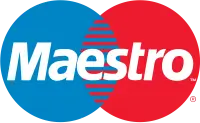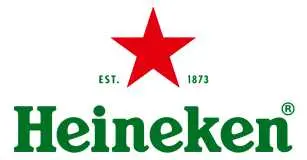
Automotive Intelligent Battery Sensor Market Growth, Size, Trends, Revenue and Future Outlook
Automotive Intelligent Battery Sensor Market Size- By Technology, By Vehicle Type, By Electric Vehicles- Regional Outlook, Competitive Strategies and Segment Forecast to 2033
| Published: Sep-2024 | Report ID: AMIN24202 | Pages: 1 - 251 | Formats*: |
| Category : Automotive & Transportation | |||
- January 2024: Joined Security and Survivability Partnership, a worldwide forerunner in cutting-edge well-being arrangements, is glad to declare the send-off of its most recent development, a Lithium-Particle Battery Location Sensor. This momentous item sets another norm in security for electric vehicles across ventures.
- November 2023: AI-driven sensors were developed and being used in new automotives that can foresee when upkeep is required, which can prompt longer battery duration and less margin time.


| Report Metric | Details |
| Market size available for years | 2020-2033 |
| Base year considered | 2023 |
| Forecast period | 2024-2033 |
| Segments covered | By Technology, By Vehicle Type, By Electric Vehicle. |
| Regions covered | North America, Asia-Pacific, Latin America, Middle East & Africa and Europe |
| Companies Covered | ams AG, Continental AG, DENSO CORPORATION, Furukawa Electric Co., Ltd, HELLA GmbH and Co. KGaA, Inomatic GmbH, MTA S.p.A, NXP Semiconductors, Robert Bosch GmbH, and Vishay Intertechnology Inc. |
- Automobile Manufacturer
- Global Automotive Component Suppliers
- OEMs (Original Equipment Manufacturers)
- Aftermarket Service Providers
- Fleet Operators
- Electric Vehicle (EV) Manufacturers and Providers
- Global Automotive Electronics and Technology Companies
| By Technology: |
|
| By Vehicle Type: |
|
| By Electric Vehicles: |
|
- Global Automotive Intelligent Battery Sensor Market Size (FY’2024-FY’2033)
- Overview of Global Automotive Intelligent Battery Sensor Market
- Segmentation of Global Automotive Intelligent Battery Sensor Market by Technology (MCU, CAN, LIN and Others)
- Segmentation of Global Automotive Intelligent Battery Sensor Market by Vehicle Type (Passenger Car and Commercial Vehicles)
- Segmentation of Global Automotive Intelligent Battery Sensor Market by Electric Vehicle (BEV, HEV, and PHEV and Others)
- Statistical Snap of Global Automotive Intelligent Battery Sensor Market
- Expansion Analysis of Global Automotive Intelligent Battery Sensor Market
- Problems and Obstacles in Global Automotive Intelligent Battery Sensor Market
- Competitive Landscape in the Global Automotive Intelligent Battery Sensor Market
- Impact of COVID-19 and Demonetization on Global Automotive Intelligent Battery Sensor Market
- Details on Current Investment in Global Automotive Intelligent Battery Sensor Market
- Competitive Analysis of Global Automotive Intelligent Battery Sensor Market
- Prominent Players in the Global Automotive Intelligent Battery Sensor Market
- SWOT Analysis of Global Automotive Intelligent Battery Sensor Market
- Global Automotive Intelligent Battery Sensor Market Future Outlook and Projections (FY’2024-FY’2033)
- Recommendations from Analyst
1.1. Scope of the report1.2. Market segment analysis
2.1. Research data source
2.1.1. Secondary Data2.1.2. Primary Data2.1.3. SPER’s internal database2.1.4. Premium insight from KOL’s
2.2. Market size estimation
2.2.1. Top-down and Bottom-up approach
2.3. Data triangulation
4.1. Driver, Restraint, Opportunity and Challenges analysis
4.1.1. Drivers4.1.2. Restraints4.1.3. Opportunities4.1.4. Challenges
4.2. COVID-19 Impacts of the Global Automotive Intelligent Battery Sensor Market.
5.1. SWOT Analysis
5.1.1. Strengths5.1.2. Weaknesses5.1.3. Opportunities5.1.4. Threats
5.2. PESTEL Analysis
5.2.1. Political Landscape5.2.2. Economic Landscape5.2.3. Social Landscape5.2.4. Technological Landscape5.2.5. Environmental Landscape5.2.6. Legal Landscape
5.3. PORTER’s Five Forces
5.3.1. Bargaining power of suppliers5.3.2. Bargaining power of buyers5.3.3. Threat of Substitute5.3.4. Threat of new entrant5.3.5. Competitive rivalry
5.4. Heat Map Analysis
6.1. Global Automotive Intelligent Battery Sensor Market Manufacturing Base Distribution, Sales Area, Product Type6.2. Mergers & Acquisitions, Partnerships, Product Launch, and Collaboration in Global Automotive Intelligent Battery Sensor Market
7.1. Global Automotive Intelligent Battery Sensor Market Size, Share and Forecast, By Technology, 2020-20267.2. Global Automotive Intelligent Battery Sensor Market Size, Share and Forecast, By Technology, 2027-20337.3. MCU7.4. CAN7.5. LIN7.6. Others
8.1. Global Automotive Intelligent Battery Sensor Market Size, Share and Forecast, By Vehicle Type, 2020-20268.2. Global Automotive Intelligent Battery Sensor Market Size, Share and Forecast, By Vehicle Type, 2027-20338.3. Passenger Car8.4. Commercial Vehicle8.5. Others
9.1. Global Automotive Intelligent Battery Sensor Market Size, Share and Forecast, By Electric Vehicles, 2020-20269.2. Global Automotive Intelligent Battery Sensor Market Size, Share and Forecast, By Electric Vehicles, 2027-20339.3. BEV9.4. HEV9.5. PHEV9.6. Others
10.1. Global Automotive Intelligent Battery Sensor Market Size and Market Share
11.1. Global Automotive Intelligent Battery Sensor Market Size and Market Share By Region (2020-2026)11.2. Global Automotive Intelligent Battery Sensor Market Size and Market Share By Region (2027-2033)11.3. Asia-Pacific
11.3.1. Australia11.3.2. China11.3.3. India11.3.4. Japan11.3.5. South Korea11.3.6. Rest of Asia-Pacific
11.4. Europe
11.4.1. France11.4.2. Germany11.4.3. Italy11.4.4. Spain11.4.5. United Kingdom11.4.6. Rest of Europe
11.5. Middle East and Africa
11.5.1. Kingdom of Saudi Arabia11.5.2. United Arab Emirates11.5.3. Qatar11.5.4. South Africa11.5.5. Egypt11.5.6. Morocco11.5.7. Nigeria11.5.8. Rest of Middle-East and Africa
11.6. North America
11.6.1. Canada11.6.2. Mexico11.6.3. United States
11.7. Latin America
11.7.1. Argentina11.7.2. Brazil11.7.3. Rest of Latin America
12.1. ams AG
12.1.1. Company details12.1.2. Financial outlook12.1.3. Technology summary12.1.4. Recent developments
12.2. Continental AG
12.2.1. Company details12.2.2. Financial outlook12.2.3. Technology summary12.2.4. Recent developments
12.3. DENSO CORPORATION
12.3.1. Company details12.3.2. Financial outlook12.3.3. Technology summary12.3.4. Recent developments
12.4. Furukawa Electric Co
12.4.1. Company details12.4.2. Financial outlook12.4.3. Technology summary12.4.4. Recent developments
12.5. HELLA GmbH and Co. KGaA
12.5.1. Company details12.5.2. Financial outlook12.5.3. Technology summary12.5.4. Recent developments
12.6. Inomatic GmbH
12.6.1. Company details12.6.2. Financial outlook12.6.3. Technology summary12.6.4. Recent developments
12.7. MTA S.p.A
12.7.1. Company details12.7.2. Financial outlook12.7.3. Technology summary12.7.4. Recent developments
12.8. NXP Semiconductors
12.8.1. Company details12.8.2. Financial outlook12.8.3. Technology summary12.8.4. Recent developments
12.9. Robert Bosch GmbH
12.9.1. Company details12.9.2. Financial outlook12.9.3. Technology summary12.9.4. Recent developments
12.10. Others
SPER Market Research’s methodology uses great emphasis on primary research to ensure that the market intelligence insights are up to date, reliable and accurate. Primary interviews are done with players involved in each phase of a supply chain to analyze the market forecasting. The secondary research method is used to help you fully understand how the future markets and the spending patterns look likes.
The report is based on in-depth qualitative and quantitative analysis of the Product Market. The quantitative analysis involves the application of various projection and sampling techniques. The qualitative analysis involves primary interviews, surveys, and vendor briefings. The data gathered as a result of these processes are validated through experts opinion. Our research methodology entails an ideal mixture of primary and secondary initiatives.



Frequently Asked Questions About This Report
PLACE AN ORDER
Year End Discount
Sample Report
Pre-Purchase Inquiry
NEED CUSTOMIZATION?
Request CustomizationCALL OR EMAIL US
100% Secure Payment






Related Reports
Our Global Clients
Our data-driven insights have influenced the strategy of 200+ reputed companies across the globe.






















